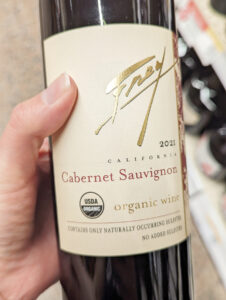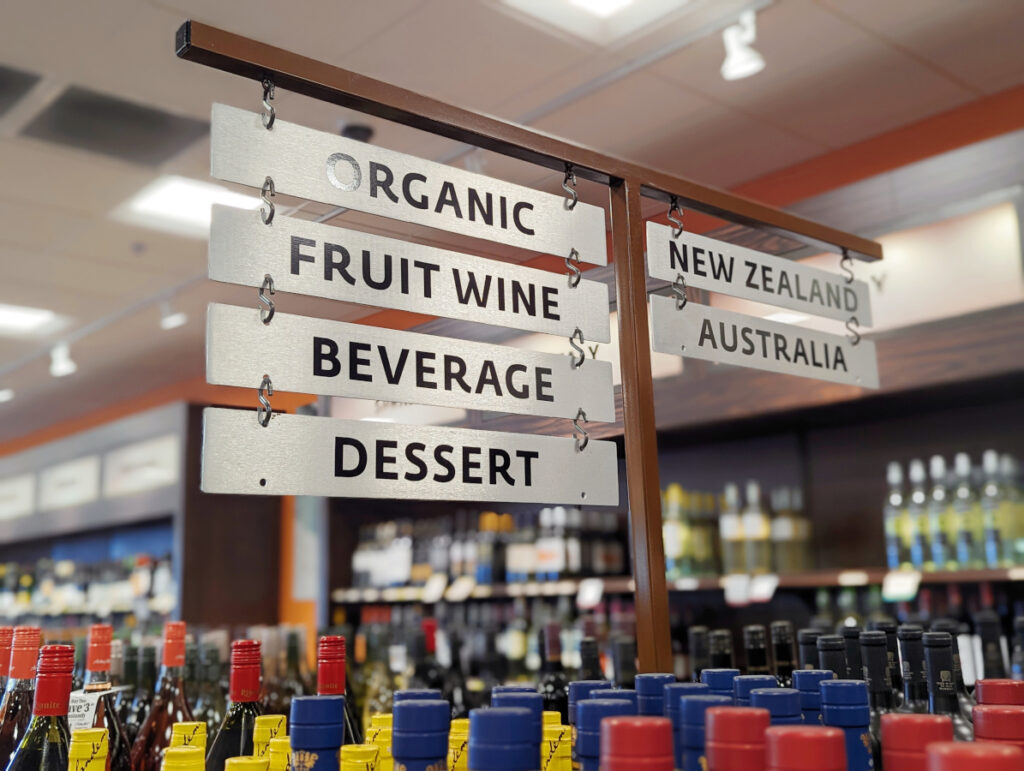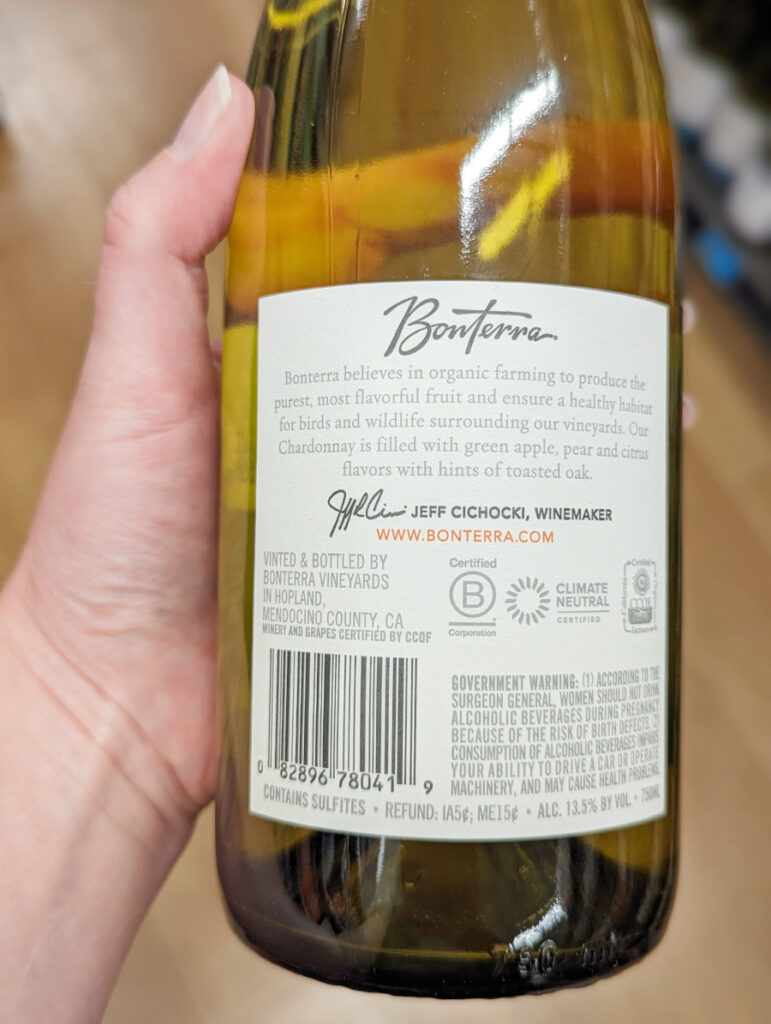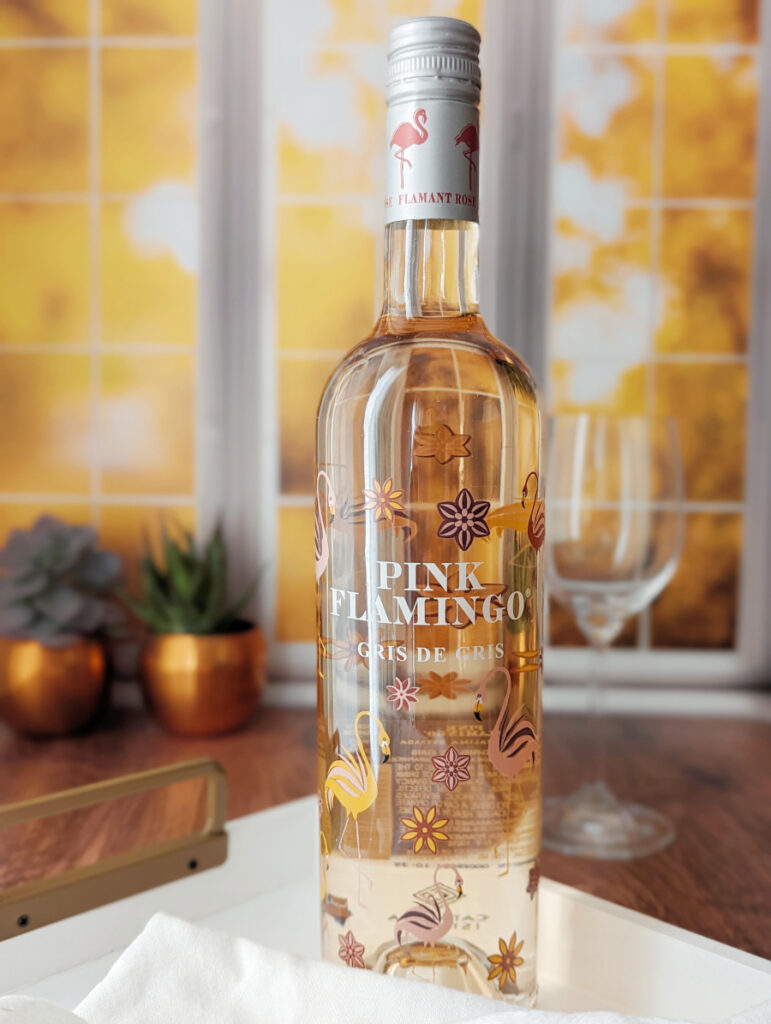
Photo by: Denise M. Gardner
When it comes to wine, it’s easy to make assumptions about quality because wine regulation and compliance is quite, well, complicated.
For example, there tends to be an overarching belief among U.S. consumers that European wines contain less sulfur dioxide than European wines. However, that’s simply not true. In fact, some European countries allow for greater concentrations of total sulfur dioxide than what is allowed in the U.S.
This month’s Sip & Swirl features another labeling term that is also easy to confuse: the use of the term “organic.”
With terms like “organic,” “biodynamic,” and “natural” getting trendier, I am hopeful that this edition will illuminate some common facts associated with how the term “organic,” specifically, is applied to wine.
Let’s dive in!
Some Background on the Term “Organic”
In the U.S., using the term “organic” on a food or beverage label has specific regulation and certification behind it. This means that a winery cannot simply add the term “organic” to a wine label without meeting the guidelines specific to the USDA National Organic Program.
Organic certification in the U.S. is a voluntary program in which the business operation must request for voluntary audits in order to receive the ability to use the USDA Organic seal on their products. Auditing through the USDA National Organic Program does come with a fee that must be paid for by the business.
Furthermore, “very small operations” (these terms are defined by the National Organic Program) may be exempt from certification requirements. However, though they are exempt from certification, they would still be required to follow all specifications associated with the National Organic Program in order to call their products organic.
I like to mention this because I have met many farmers over the years that follow organic practices, but do not participate in National Organic Program, which is usually due to cost. Thus, as a liaison between industry and consumers, I like to remind consumers to get to know your local farmer’s practices.
Finding “Organic Wine” on a Label

Photo by: Denise M. Gardner
When it comes to wine, specifically, in order to use the terms “Organic Wine” on the label, both the grape growing practices and winemaking practices have to be certified organic. This is more thoroughly explained in the USDA Organic Blog.
To see the terms “Organic Wine” on the label of wine:
- The grapes used to make the wine must be certified organic.
- The winemaking practices used to make the wine must be certified organic.
- All ingredients used to make the wine have to be certified organic, if applicable, or cannot be on the prohibited list.
- All ingredients used to make the wine cannot be genetically engineered.
- Sulfur dioxide (sulfites) cannot be added to the wine.
While sulfites are not added to the wine, “Organic Wine” is not sulfite-free. All alcoholic fermentations produce some sulfur dioxide as part of yeast metabolism. Therefore, every wine contains some concentration of sulfur dioxide.
Based on what I see on wine retail shelves, “Organic Wine” options are often limited. However, it is much easier to find wine labeled with the terminology “Made with Organic Grapes.”
Finding “Made with Organic Grapes” on a Label

Photo by: Denise M. Gardner
Use of the terms, “Made with Organic Grapes” has its own outline of specifications. Even when you find these terms on a bottle of wine that is produced in a different country, the use of those terms still has to meet the specifications as outlined by the USDA National Organic Program.
Again, the difference between “Organic Wine” and wine “Made with Organic Grapes” is more thoroughly explained in the USDA Organic Blog.
Wine “Made with Organic Grapes” must be made from grapes that were all certified organic. However, the winemaking process is not certified organic, and therefore, the ingredients that go into the wine are not required to be organic. However, finding organic ingredients is usually not an issue as many common winemaking ingredients have an organic certification. Furthermore, winemakers would not be able to use ingredients that are genetically engineered, which is a general rule associated with the organic certification. As far as I know, winemaking ingredients are not genetically engineered.
Finally, wine “Made with Organic Grapes” can contain sulfur dioxide up to 100 mg/L (ppm) in total concentration, which is below the limit for all other U.S. wines. From a wine preservation perspective, the addition of sulfur dioxide is especially useful as sulfur dioxide offers both antimicrobial and antioxidant protection of the wine. (Wines without adequate sulfur dioxide can more easily become oxidized, which is a wine quality defect.)
Where Can You Find a Wine’s Organic Status?

Photo by: Denise M. Gardner
If you are searching for wines on an online wine retailer, usually using the term “organic” in the search engine will help filter out wines except for those with “Organic Wine” or wine “Made with Organic Grapes” on the label.
Some wine retail stores will also have sections in the store that are specific for organic wines, which will likely include wine made with organic grapes. It’s important to remember that the country of origin for those wines will be variable. You can find these wines made in the U.S., Argentina, Chile, France, Australia, etc.
Furthermore, the wine grape variety can also vary. Thus, whether you are a red, rosé, sparkling, or white wine drinker, there are usually wines in each of these styles that provide some sort of organic option.
Look on the terms “Organic Wine” or “Made with Organic Grapes” on the front label, as shown in the images throughout this Sip & Swirl edition. It’s possible you may also find the terminology on the back label, as well.
Keep in mind that some grape growing regions cannot easily produce grapes using the specifications as outlined by the National Organic Program. Grapes tend to suffer from a plethora of diseases and pests that may, unfortunately, fall outside of the allowed pesticides within the National Organic Program. Nonetheless, it’s also important to recognize that organic produce, including grapes used for wine, are not necessarily pesticide-free. Instead, growers of organic grapes will use pesticides that are allowed within the organic program.

Photo by: Denise M. Gardner

Photo by: Denise M. Gardner

Photo by: Denise M. Gardner
Wine Quality Associated with Wines “Made with Organic Grapes”
Like with all wine, the quality associated with wine made from organic grapes can be quite variable. If you have the opportunity to visually evaluate the wine in bottle and/or taste the wine before purchase, it may help in terms of assessing the wine’s quality before purchase. The issue with most wines that carry an organic status is that many are easily oxidized due to the fact they do not always contain enough sulfur dioxide to inhibit the oxidation process.
Wine oxidation is generally considered a wine quality flaw. Oxidized wines can look visually brown, or contain a brown tint, which is a common clue that the wine could be suffering from oxidation. Oxidized wines also lack fruitiness. Therefore, it’s common that “Wines Made with Organic Grapes” or “Organic Wines” may not necessarily taste the same as wines without any organic labeling, even if the variety is the same.
However, not all wines made with organic grapes suffer from this quality defect. Some wines produced from organic grapes are quite nice.
Thus, if you are trying to find some wine brands in which the wines are produced from organic grapes, it may take a little extra exploration in terms of finding one that you can rely on the quality.

